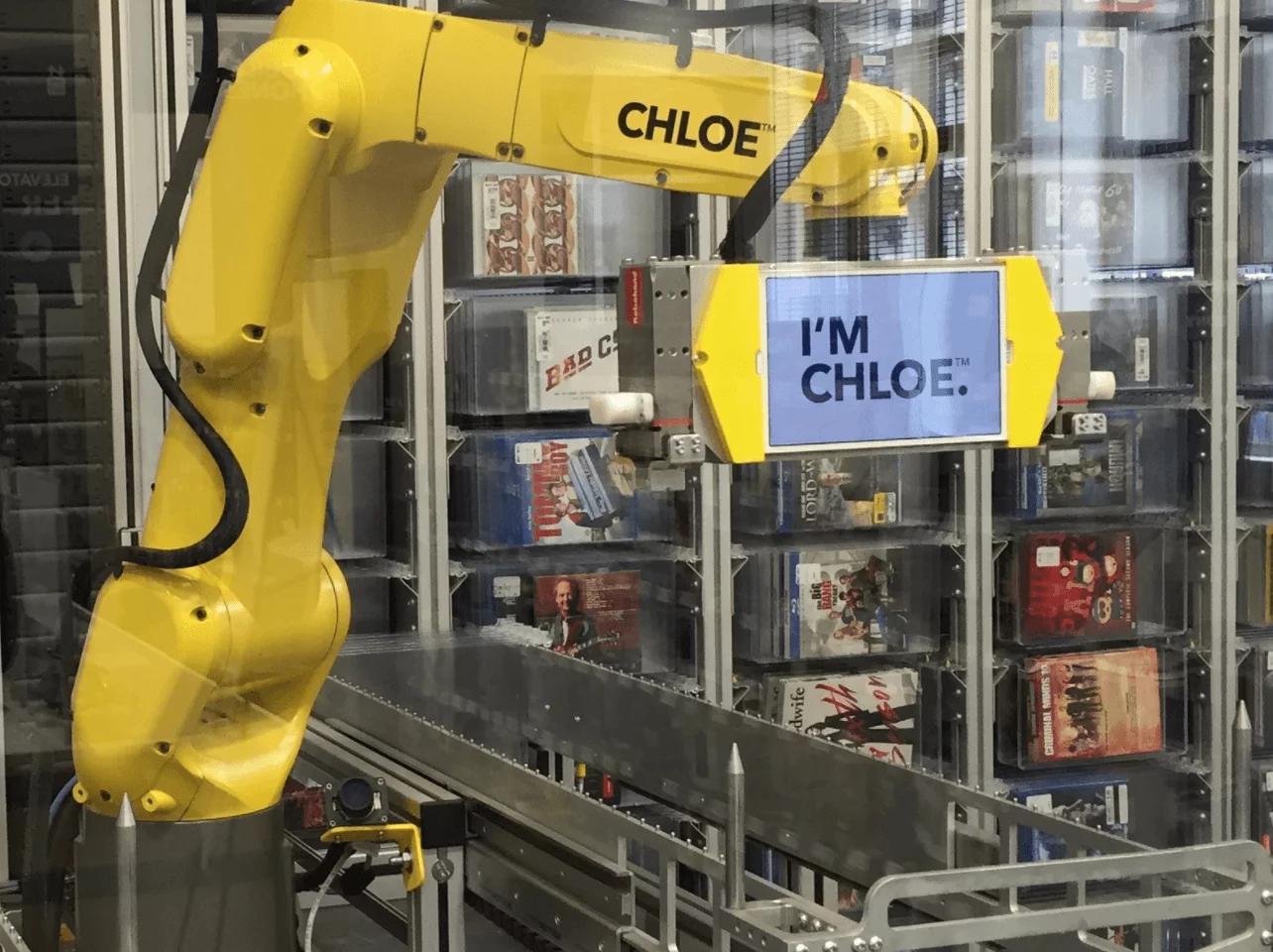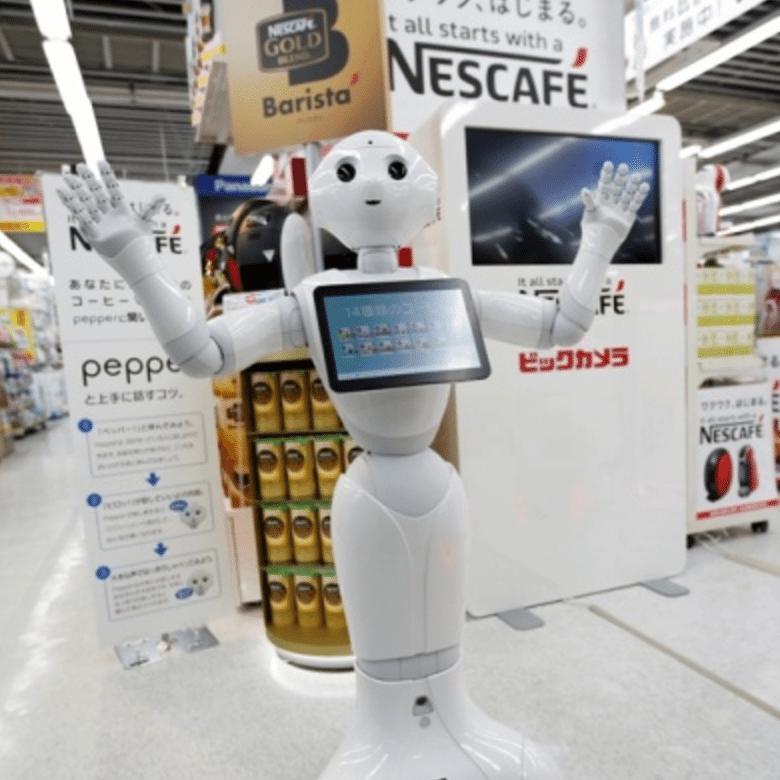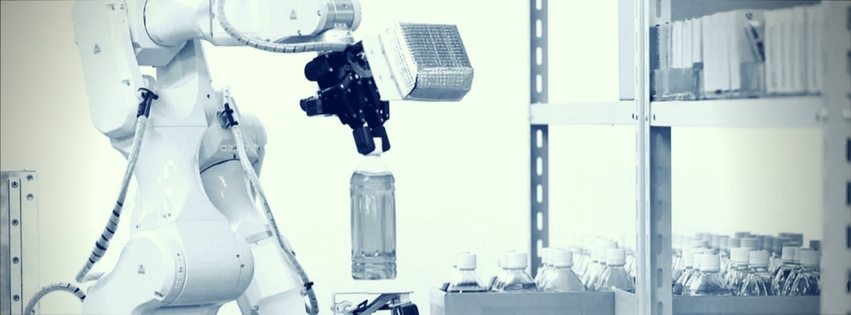It’s no secret that e-tailer Amazon has an army of robots at its warehouses to fulfill orders; currently its robot detail is 45,000 strong. The company also wants to put a fleet of airborne drones into service for fast deliveries. The question that traditional retailers face is whether or not investing in robots to operate inside their stores can actually improve business and help them stay relevant with consumers.
In this article we set out to discover some of the more common use-cases of robotics in retail today, and shed a light on some of the future trends of these applications on retail at large.
In this article we cover three primary robotics applications that should be of interest to retail business leaders:
- In-Store Customer Service
- Using Robots to Manage Stores like Warehouses
- Bringing the Store to the Customer
For each application we provide background information on the robot, explain it’s current uses, and extrapolate on it’s future applications. We include whatever data is available about the applications, in addition to commentary on what each robotics applications really means in terms of impact on the retail sector.
(Readers with a broader interest in commerce and eCommerce in general may want to read our full article on artificial intelligence applications in retail.)

Retail Robotics Use Case 1 – In-Store Customer Service
Lowe’s LoweBot
One way retailers plan are testing robots in stores is to help customers find goods they are searching for, like a rolling kiosk to look up products and other information. Home improvement retailer Lowe’s introduced the LoweBot in 2016 at its stores in San Francisco and plans to expand the trials in 2017 to stores in San Jose. Fellow Robots developed LoweBot in conjunction with Lowe’s.
Technology Summary: Customers can ask LoweBot—by speaking or using a touch screen—where to find items they need inside the store. Shoppers can also ask the robot some basic customer service questions that would otherwise need to be addressed to a human worker. The robot also performs real-time inventory tracking as it cruises down the aisles. The information LoweBot gathers as it works is supposed to help identify shopping patterns at the location, so that way the retailer can not only resupply its shelves but also get more understanding of which merchandise moves more quickly, and during which days of the week or seasons.
Before Lowe’s began this test at its own stores, the company tried out the concept as early as 2014 at its Orchard Supply Hardware subsidiary in San Jose with the OSHbot (Lowe’s had acquired most of the assets of Orchard Supply Hardware in June 2013). The robot rolls up to customers, greets them, and asks if it can help find merchandise in the store. If the shopper brought an example of what they are looking for, for instance a spare part, they can hold it in front of a camera built into the robot. Assuming that the product is visually recognized by the robot and is in stock, OSHbot can lead the customer the appropriate shelf to find it.
Future Applications: According to head of Lowe’s Innovation Labs, Kyle Nel, “…this is not just some far-reaching innovation effort that’s supposed to look cool. It actually has a real world benefit for the short, medium and the long term, and I think we’ve been able to show that over time…There’s benefit here that happens immediately, here and now.”
We’ve seen a number of Nel’s quotes alluding to similar optimistic-yet-vague statements (in his defense, I’m sure the Lowe’s communications / PR teams need approval for any statement on major media, and they seem to be airing on the side of keeping their cards close to their chest). We haven’t seen any data released on the success or failure of this application.
Lowe’s has not stated how much it is spending on the development of its robots, but the company has a division, Lowe’s Innovation Labs, that focuses on this front. That is a move not unlike Amazon’s formation of Amazon Robotics to double-down on creating robots for its operations.
Companies with large enough budgets (and large enough need) seem to be taking robotics innovation in-house, as opposed to using outside robotics vendors (like those listed in our “company profiles”). One can presume that by doing so, companies like Amazon and Lowe’s might look to create a sustained competitive advantage with it’s robotics customer-facing and warehouse robotics applications.
We can presume that LoweBot-like customer service robots will need a significant amount of training working alongside human experts in order to dial in its actions to serve customer needs.
In our AI in Industry interview with Dr. Irfan Essa or Georgia Tech (an interview worth listening to for anyone interested in machine vision), we learned just how much “subject matter expertise” must be taken into account in training a robot’s visual systems. Suffice it to say that voice applications and movement around a shop floor will involve similar hands-on training over the years ahead.
Tally by Simbe Robotics
Lowe’s is not alone in putting robots in store aisles. In 2016, discount store chain Target tested a robot called Tally, built by Simbe Robotics, to keep track of product inventory on its shelves.
Technology Summary: Unlike the LoweBot, Tally is focused specifically on monitoring inventory levels and the pricing of products within stores. Tally uses visual recognition software to recognize when a product’s inventory is low as well is if the price associated with the item is correct. Tally had its test run last year at a Target store in San Francisco, however the company has yet to announce any plans to expand on that trial or comment on the results.
Future Applications: By keeping track of inventory, Tally may be able to boost sales. “When it comes to the retail industry, shopper experience is everything. If a product is unavailable at the time the shopper wants to buy it, the retailer has missed an opportunity and disappointed their customer.” Brad Bogolea, CEO and Co-founder of Simbe Robotics told ZD Net.
As with the rest of the Lowe’s robotics projects, we have no firm data on the actual business impact of these robots now – and indeed they should likely be seem more as “tests” for the time being. A prudent business reader in the retail sector should see these present applications less as “wins” in terms of ROI (it’s unlikely that any of these machines have the “kinks” worked out of them well enough to drive savings to the bottom line yet), and more as signposts for worthwhile future directions in retail robotics.
Softbank’s Pepper Robot
More than 140 Softbank Mobile Stores in Japan are using the humanoid robot Pepper. Apple recently announced that it was adding $50 billion to Softbank’s new Vision Fund, which is designed to pave the way for the next generation of tech companies. According to Business Insider, the company is currently the world’s biggest private equity fund. Qualco and Foxconn have also expressed interest in investing in the Vision Fund.
Technology Summary: Pepper the robot can be programed to chat and interact with customers, give direction and answer questions. The robot can also play music, light up, dance and take selfies with passers-by. SoftBank has been working to bring Pepper to American markets for the past 12 months.
Future Applications: SoftBank has done an excellent job with PR, and has turned Pepper into as much of a “household name” as retail robotics has seen at this point. If SoftBank can make Pepper into a kind of platform for retail applications across sectors, it can ensure it’s first mover status with wide distribution.
As of yet, however, tangible evidence of Pepper making more money than it costs (and actually satisfying customers in a scalable fashion) is scanty.
In a pilot at a Palo Alto tech shop, the retail store claimed a 70 percent increase in foot traffic during the week Pepper worked there. A second pilot at a Santa Monic retail outlet claimed a 13 percent revenue increase and six-fold boost in sales of a featured product. It seems safe to assume that these “increases” are due to the novelty of the new robot toy, and not to some inherent improvement to business processes or customer experience which Pepper brought to the business.
Even if it takes another five years for airports or big box retail giants to see a legitimate return with Pepper, any tangible evidence of sustainable ROI will quickly drive adoption of similar retail robotics applications across other organizations that have the budget to invest in Pepper (or it’s competitors).
Retail Robotics Use Case 2 – Using Robots to Manage Stores like Warehouses
Best Buy’s Chloe Robot
Not all robots in retail actually travel around the store. Consumer electronics retailer Best Buy collaborated with PaR Systems to introduce Chloe—an automated system that retrieves products from shelves. The Chloe test began in 2015 at the Best Buy store in the Chelsea neighborhood of New York.
Think about it like one of those claw machine games at the arcade, but for electronics products and video games – and with a much larger arm. The machine has a distinctly industrial look:

Current Uses: Chloe has a robotic arm built on a chassis that moves among shelves in an area set behind a clear partition. Customers can use touch screens in the store to pick out merchandise they want, such as earbuds, movies, video games, or other accessories. Shoppers can then watch the arm navigate the shelves to retrieve their products.
The Chloe system lets customers make purchases without the need for an employee (as long as it functions properly.) Also, by shelving merchandise vertically, this system opens up about 1,000 sq. ft. of floor space in the store, according to PaR Systems. Like other robotic systems, Chloe tracks shopping trends, which can be used to refresh inventory. Best Buy has yet to comment on the possibility of expanding Chloe to more locations or if there has been any notable benefit to the store in Chelsea.
Future Considerations: The aim is to use Chloe to use vertical space more efficiently and to simplify complex customer needs, by easily selling items that are locked behind glass. “She provides the retail experience customers are asking for and operational value propositions retailers need today and in the future,” Chad Stiernagle, one of the creators of Chloe for Best Buy, said in a statement reported in bizjournals.
Retail Robotics Use Case 3 – Bringing the Store to the Customer
Domino’s Robotic Unit (DRU) Delivery Robot
Domino’s may be a quick serve food chain, but it is also exploring whether or not robots can help it serve customers remotely. In March 2016, the company announced plans to introduce a driverless vehicle, the Domino’s Robotic Unit (DRU), in Australia to deliver its pizzas. The idea is to use GPS data Domino’s gathered over the years from its human drivers, and combine that with an automated vehicle to make delivery rounds. The technology is still being developed and putting an autonomous vehicle on the road will also require regulatory approvals before DRU can take to the streets.
The ambitions of the DRU division also extend to the air. Last November in New Zealand, Domino’s made its first ever food delivery by an aerial DRU Drone. This is an idea the company has been tinkering with since at least 2013, when it tested pizza being transported by remote-controlled copters. We’ve written previously about why industrial drone applications may become financially viable well before commercial delivery, but a company with a budget like Domino’s should certainly aim to be ahead of the curve for when regulations and technology make delivery viable.
Technology Summary: Since DRU is not yet in regular service, there is no quantifiable measure at this time of any real gains it might offer—if any at all. A Domino’s spokesperson, who asked not be named, says the company continues to test and develop its ground-based and aerial DRU vehicles. Domino’s announced in late March it entered into a partnership with a third-party, Starship Technologies, a ground-based autonomous delivery company, to put robots in service for its European markets. The Domino’s spokesperson says this arrangement will allow the company to continue to test its own robots while also learning from working with Starship in Europe.
Before the DRU units can go beyond the testing phase to making regular deliveries on the road in Australia (or other markets), the robots will need to pass a number of trials and gain state and federal approvals, the spokesperson said. The timeframe to get such approvals is expected to vary by country.
Future Applications: Domino’s says it is testing and developing these robots in response to industry changes that are already underway. “With the growth of online retail and the quick service restaurant industry,” the spokesperson says, “it is forecasted that there will not be enough delivery drivers to meet demand in the future.”
In order to combat such a shortage, Domino’s believes that putting a fleet of autonomous delivery vehicles in service for smaller, nearby orders will free up its human drivers to handle larger deliveries or orders that are farther away. “It also doesn’t make sense for a two-ton vehicle to deliver a two-kilogram pizza order,” the spokesperson says. “DRU is about being more efficient with resources while providing fast, prompt service to our customers.”
Domino’s declined to comment on how much money it has invested in the development of DRU.
The company says once DRU is put into regular service, the autonomous vehicle will travel roads, trails, and footpaths to bring the orders to curbside. That means customers will have to come out to the ground floor to pick up their purchase. The spokesperson says DRU would operate in residential areas over shorter distances.
Domino’s says it sees DRU as an addition to, rather than a replacement for its human drivers. Further, the company says it will need to hire a new segment of workers, such as maintenance, to keep its fleet of autonomous vehicles operational. “The aim is that DRU will allow for more efficient delivery, crunching down our customers’ waiting time,” the spokesperson says.
Concluding Thoughts on Robots in Retail
Despite a lack of specific data on ROI (and in many cases technology investment) in the firms implementing retail robots today, we see a trend across a number of applications (some of which might be better understood after reading our full machine learning in robotics article):
- Drawing customer attention: Because retail robots are a new innovation, customers are curious to see them in action. In our opinion this counts as more of a “toy” benefit, which may help to increase adoption and hype, but won’t be enough to make retail robots an industry standard at businesses like McDonnalds, Lowes, Wal-Mart, etc.
- Improving use of storage space: In the warehouse robots permit the use of narrower aisles, and on the shop floor, they allow use of vertical space which is out of reach for human sales personnel.
- Keeping track of inventory: Robots can quickly locate items that have been misplaced, so that sales are not lost.
- Guiding customers on premises: From airports to hotels to warehouses and beyond, customers will always need help finding the product or location they’re headed to. This task requires little in terms of robot agility or dexterity, and seems like a viable near-term application in and out of the retail environment.
- Retrieving products for customers: Robots can quickly access goods that are store behind glass so the customer does not have to wait for a free member of staff (i.e. Best Buy’s Chloe robot).

Can robots bring customers back to brick-and-mortar retail stores? Will robots be able to create a legitimately better customer experience?
SoftBank’s pilot launches in the US seem to suggest that this might be the case. But are they really enhancing shopper’s experiences or just piquing customer’s curiosity. Whether the novelty of retail robots will last, remains to be seen.
Technological unemployment and safety in human-robot interactions remain important topics for the consideration of both businesses and governments.
Our last interview with Wendell Wallach (author of the technology governance book titled A Dangerous Master) touched on some methods that industries might use to self-regulate in order to keep up with innovation:
“Think about robots going into the home or into a commercial environment… what would be the standards to ensure that they would be safe, and how would it be judged or certified that a particular product is safe? This could be done as an industry oversight board as opposed to a governmental intervention.”
Wendell mentions that industry oversight boards would have the benefit of evolving and changing quickly as the technology changes (and we can expect for it to change more and more) – a kind of “soft governance” agility that the federal government would likely be incapable of.
It seems unlikely that industry committees alone would be able to tackle the broader possible concerns of technological unemployment (which seems rather inevitable as robots gain dexterity and the ability to understand speech). While we can’t know how society as a whole will adjust to this shift toward automation, it seems rather inevitable that businesses have an incentive to do all they can to protect their margins.
It should be noted that the surge in robotics in the fast food industry has coincided with the recent $15 hike in minimum wage rolled out across a number of US cities (Mountain View, CA is one of the cities to be enacting this raise). It should come as no surprise that Lowe’s is testing it’s technology in San Jose, a location where low-skill labor may soon come at a steeper cost.
With well over 250,000 employees, Lowe’s is one of many retail giants who will benefit greatly from phasing out some of it’s warehouse employees with the help of robotics. Like any other company with oodles of employees, however, Lowe’s will likely use friendly non-threatening language, steering clear of using the term “replace”, even if that’s exactly what the company has in mind (surely if it’s competitors get lean in the same way, Lowe’s will almost certainly have to follow suit).
(The preliminary research for this article was conducted by Joao-Pierre Ruth)
Image credit: Raconteur




















